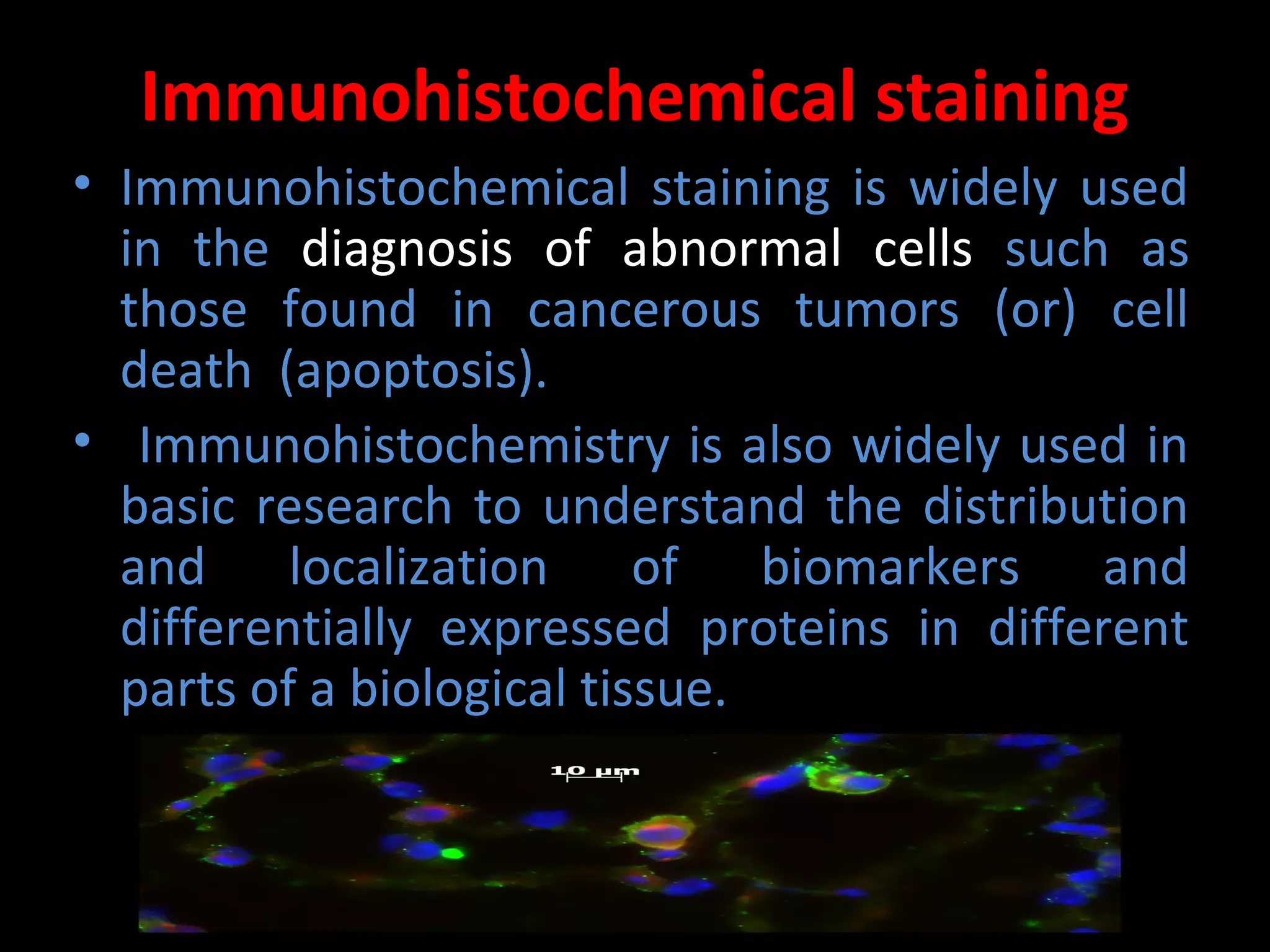Immunohistochemistry (IHC) is a technique that combines histological, immunological, and biochemical methods to detect specific tissue components using antigen/antibody reactions. It is widely used for diagnosing abnormal cells, understanding biomarker distribution, and conducting research on protein expression in various tissues. The technique involves careful sample preparation, the use of monoclonal and polyclonal antibodies, and various detection methods, including chromogenic and fluorescence-based reporters.



















